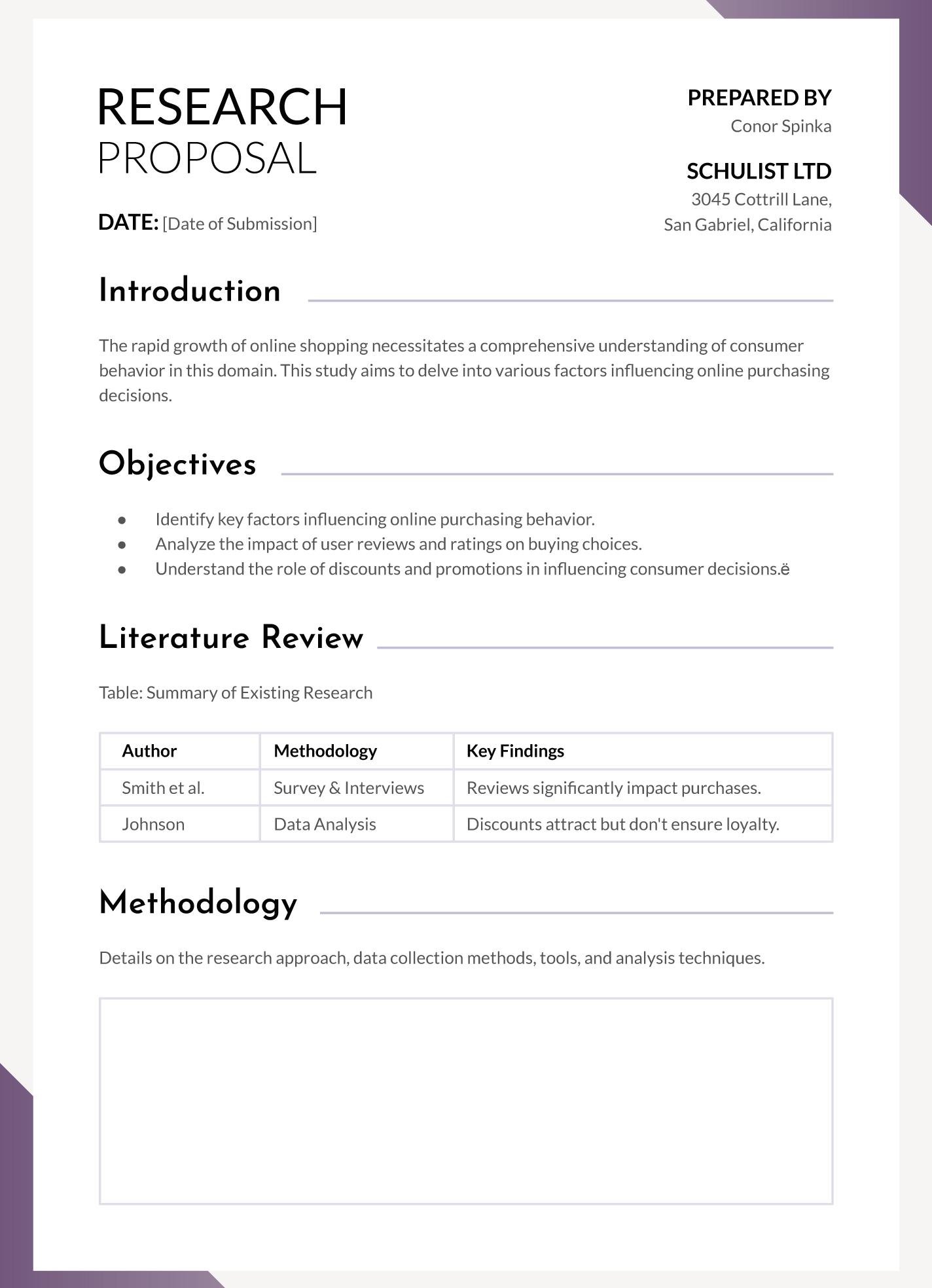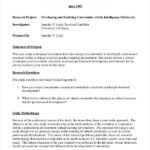research report and research proposal

In the vast landscape of academia and professional inquiry, two foundational pillars stand tall: the research report and the research proposal. These documents serve not only as vehicles for knowledge dissemination but also as beacons guiding scholars and professionals through the intricate maze of investigation and discovery. While a research report summarizes the findings of a completed study, illuminating the path paved by rigorous analysis, a research proposal lays the groundwork for future exploration, sketching the blueprint of an idea yet to unfold. In an era where information is paramount and critical thinking is indispensable, understanding the distinctions and interconnections between these two essential components becomes crucial for anyone navigating the waters of research. This article delves into their unique functions, structures, and significance, shedding light on how they contribute to the collective pursuit of knowledge and innovation. Join us as we unravel the intricacies of research reports and proposals, exploring their roles in shaping our understanding of the world around us.
Understanding the Distinct Roles of Research Reports and Research Proposals
The roles of research reports and research proposals are fundamentally different, each serving a unique purpose in the research landscape. A research report is a comprehensive document that outlines the findings of a completed study. It focuses on providing a thorough analysis of data and includes elements such as the research question, methodology, and conclusions. The report is designed to communicate the results to stakeholders, making it necessary for it to be clear, objective, and well-structured. Key components of a research report include:
- Title: Reflects the study’s main focus.
- Abstract: A brief summary of the entire report.
- Introduction: Introduces the problem and objectives.
- Methodology: Describes how the research was conducted.
- Results: Presents the findings of the study.
- Discussion: Interprets the significance of the findings.
- Conclusion: Summarizes the key insights.
On the other hand, a research proposal serves as a blueprint for future research. It is a persuasive document crafted to convince stakeholders, such as funding bodies or academic committees, of the significance and feasibility of a proposed study. Proposals outline the intended research question, the planned methodology, and the expected outcomes, emphasizing why the research is essential. Essential elements in a proposal include:
| Element | Description |
|---|---|
| Title | Concise and descriptive. |
| Introduction | Contextualizes the research question. |
| Literature Review | Reviews existing research on the topic. |
| Methodology | Details the research approach and tools. |
| Budget and Timeline | Outlines required resources and schedule. |

Key Components of Effective Research Proposals
Creating a compelling research proposal hinges on several essential components that clearly communicate the intent and significance of the study. A well-defined research question serves as the cornerstone, guiding the direction of the investigation. This question should not only reflect the focus of the research but also highlight its relevance and potential impact in the chosen field. Moreover, an effective literature review is crucial; it contextualizes the research within existing studies, demonstrating awareness of current knowledge and the gaps the proposed study aims to fill. Lastly, a detailed methodology section outlines how the research will be conducted, covering the research design, data collection methods, and analysis techniques, ensuring that the approach is both rigorous and feasible.
In addition to these foundational elements, a successful proposal incorporates a clear timeline and a comprehensive budget, which collectively indicate the project’s viability. The timeline lays out a schedule for various phases of the research, from initial preparations to final analysis, while the budget presents a realistic assessment of the resources required. It’s also beneficial to include a dissemination plan, outlining how the findings will be shared with the broader community or stakeholders, thus emphasizing the proposal’s relevance beyond academia. When crafted thoughtfully, these components not only elucidate the proposal’s objectives but also instill confidence in reviewers about the research’s potential success.

Analyzing Research Reports: Structure, Clarity, and Impact
Understanding the structure of a research report is essential for both authors and readers, as it dictates the overall coherence and flow of information. A well-structured report typically follows a systematic layout, which includes key elements such as Abstract, Introduction, Methods, Results, and Discussion. This standardized format not only aids in clarity but also facilitates the accessibility of findings. Each section serves a distinct purpose:
- Abstract: A succinct summary encapsulating the entire research process.
- Introduction: Contextualizes the study, stating the research problem and its significance.
- Methods: Details the methodology, ensuring reproducibility.
- Results: Presents data in an organized manner, often utilizing tables and figures for clarity.
- Discussion: Interprets the findings, linking them back to the research question.
Clarity is paramount in scientific reporting, as it directly impacts a report’s effectiveness. Clear language and precise terminology enhance the communication of complex ideas. Moreover, the use of visual aids like tables and graphs can significantly increase the report’s impact by presenting data in an easily digestible format. For example, a simple table can effectively summarize key findings or compare variables, allowing readers to grasp essential information quickly:
| Variable | Finding | Significance |
|---|---|---|
| Variable A | Positive correlation | p < 0.05 |
| Variable B | No significant change | p > 0.05 |

Best Practices for Collaborating on Research Documents
html
Effective collaboration on research documents can significantly enhance the quality and coherence of the work being produced. To foster a productive environment, it is crucial to establish clear communication channels among all participants. Consider utilizing tools such as Slack or Microsoft Teams to facilitate real-time discussions, allowing team members to share insights and feedback instantly. Regular check-ins can also be beneficial. These meetings help ensure everyone is aligned with the project's objectives and timelines, while also providing a platform for addressing concerns and challenges.
Another important aspect of collaboration is the use of shared platforms for document editing. Platforms like Google Docs or Microsoft OneDrive enable multiple authors to contribute simultaneously, allowing for seamless updates and version control. To further streamline this process, consider the following practices:
- Use clear and consistent formatting to make the document easy to navigate.
- Assign roles and responsibilities to ensure accountability and clarity in contributions.
- Maintain a centralized reference list with all sources cited, promoting transparency in research.
Best Practice
Benefit
Regular Communication
Ensures alignment and addresses issues promptly
Shared Editing Platforms
Facilitates real-time collaboration and version control
Clear Role Assignment
Enhances accountability within the team
In Conclusion
understanding the distinction and interplay between a research report and a research proposal is essential for navigating the academic landscape. A research proposal serves as a blueprint, outlining your intended exploration and its significance, while a research report encapsulates the findings of your investigations, presenting them in a structured and compelling manner. Both documents are vital in the lifecycle of research; proposals pave the way for inquiry, and reports illuminate the path of discovery. As you embark on your research journey, remember that these tools not only communicate your ideas but also contribute to the larger scholarly dialogue. May your future inquiries be insightful, your proposals persuasive, and your reports impactful, guiding others through the ever-expanding world of knowledge.




